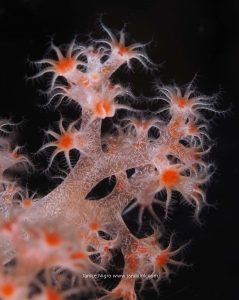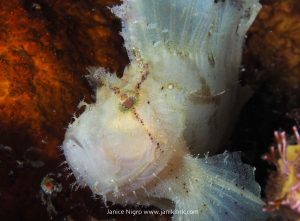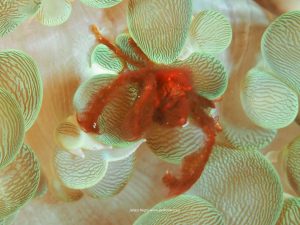Underwater photography : What are you waiting for?

written by Janice Nigro
I am not going to kid you. My first underwater photographs were terrible. But I showed them to everyone. I even somehow convinced an underwater photographer to use one of my photographs in a piece he wrote for a diving magazine. Never mind that the piece was about post-photo editing.
But I was hooked. Like that feeling when you are first in love, oblivious to any outside criticisms, I didn’t think, I just followed my gut.
I began to read about underwater photography. I looked at photographs in online forums. And I talked to underwater photographers everywhere.
One shop owner gave me a critical piece of advice. He told me I didn’t need a more sophisticated expensive camera (partly because I had no previous experience with a camera) and housing. All I really needed was a strobe.
I have since graduated from that first simple set-up, but not by much. The main piece of equipment that made a difference was the strobe. To learn more about techniques check out this website.

I added other accessories, often just for an upcoming trip, such as wet lenses to take better macro or wide angle shots. And I got better at diving. My buoyancy control improved, and since my hands were holding the camera, I stopped waving them around like mini-propellers to stabilize myself.
I had no expectations for the results, so I took photographs of anything that looked interesting to me. Some of the most prized creatures underwater are extremely difficult to photograph well, due to size and location. And the fact that everyone else wants to photograph them too. I adopted my own approach, which was to look and move onto something else easier to photograph.

Many of the creatures easier to photograph are the ones that don’t move (sessile), or they don’t move fast. I take that back because I love photographing feather worms which are a strange creature with a body buried in the sand and an elaborate tentacle system gracefully flowing above to capture nutrients. The tentacles often disappear instantly in response to that first blink of your strobes, or even a perceived sense of danger.

But I became attracted to some of the simplest creatures because of their unusual colors, textures and patterns. They are only underwater, and they illustrate life so perfectly in its most basic and vulnerable, but beautiful forms
Underwater photography was the art form that finally stuck. It was a natural fit for me as a scientist. I was already exploring the natural world on land. Or at least in a petri dish.

Underwater photography is challenging though. It’s a dynamic art. Not only are the animals moving, but so are you. You have to have an eye for finding critters. And what was there today might not be there tomorrow. Time is limited composing photos. Animals become impatient or shy, and divers still need to breathe air. Eventually you have to surface. I always see what I should have done differently, but it has to wait until the next trip underwater.
A few years ago when I moved to a different city in the USA, underwater photography became my vehicle for meeting people in my new community. I started to sell my photographs as cards and prints at a local market.
A whole new life began for me, one entirely outside of my science world. I even entered some of the abstract photographs in local exhibitions.
My work grew from taking underwater photographs, to taking beach photos and even painting a little bit. I went from travelling with no camera, to travelling with at least three cameras.
And then I started to write stories. I now have my own small freelance writing and photography business, and it all began when I committed to taking that first course to get my open water certification.
If you would like to learn more about technique on photography check out this great article.
What are you waiting for?